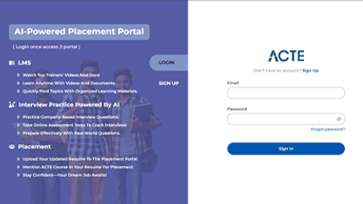Training with InDesign is highly beneficial for anyone who wish to succeed in the fields of graphic design, desktop publishing, and visual communication. Here are some reasons why InDesign training is important:
- By giving hands-on practise with tools, typography, colour schemes, and design concepts for high-quality layouts for print and digital media, InDesign training improves design skills.
- InDesign is adaptable and useful in a variety of industries, enhancing job chances through a variety of project options and training.
- Learn effective navigation, shortcuts, and best practices to streamline your design process, increase productivity, and achieve design objectives more successfully.
- You can produce content for both conventional print media and interactive internet platforms thanks to InDesign training, which covers both print and digital design.
- Your skills will be validated by formal training and certification from reliable sources, which will increase your appeal to clients, employers, and freelance prospects.
- Your design abilities will remain competitive and current if you stay up to speed with the newest features, methods, and industry trends through training.
- Your ability to launch your own design company or provide freelance design services thanks to your proficiency in InDesign gives you the freedom to work how and when you choose.
Upcoming Adobe InDesign Innovations
Adobe often updates its software selection to take into account new developments in both technology and design trends as well as its consumers' changing needs.
Enhancement to Collaboration Tools: Adobe may release enhanced collaboration tools that let several designers work together seamlessly on the same project, accelerating productivity and optimising the design process.
Automation and AI Integration: Future iterations of InDesign may include automation and artificial intelligence (AI) to help designers with tasks like layout recommendations, font matching suggestions, and picture optimisation.
Workflow in a cloud environment: Designers will be able to view their projects from any location and communicate more effectively if Adobe increasingly integrates InDesign with cloud-based systems.
Enhancing Dynamic Design: Given the growing need for interactive content, Adobe may enhance InDesign's capabilities for creating immersive and dynamic digital publications, including integration of augmented reality (AR) and virtual reality (VR).
Improvements in Digital Publishing: Adobe InDesign might provide capabilities suited to newly emerging digital formats and platforms as digital publishing progresses, guaranteeing that designers can produce material that is optimised for many devices and screens.
Tools for Responsive Design: InDesign may add features that make it simpler to create layouts that easily adapt to various screen sizes and orientations as responsive design gains in importance.
Enhanced Typography Tools: Future iterations of InDesign might come with much more sophisticated typography tools that would let designers make complex text layouts and graphics.
Tools Used for Adobe InDesign
Adobe InDesign offers a variety of tools that designers may use to produce professional and eye-catching layouts for print and digital media.
- Selection Tool (V): The Selection Tool is a crucial Adobe InDesign tool for selecting, moving, and modifying layout elements, organizing, modifying, and converting design elements.
- Eyedropper: Adobe InDesign's Eyedropper Tool allows for easy coordination of colors, gradients, and other properties across elements, ensuring visual coherence and seamless layouts.
- Type Tool (T): To add and edit text in your layout in Adobe InDesign, utilise the Type Tool (T). It's an essential tool for composing text for your designs and working with typography.
- Pen Tool (P): Pen Tool (P) is a versatile tool for drawing and altering paths, curves, and lines, enabling precise vector pathways for unique design elements.
- Ellipse Frame Tool (L): Create elliptical frames with the Adobe InDesign Ellipse Frame Tool (L). These frames can hold graphics, pictures, or other information.
- Line Tool (/) : Adobe InDesign allows users to draw straight lines or routes within documents, creating borders, dividers, and other design components using the Line Tool (/).
- Links Panel: The Links panel is crucial for managing external assets like pictures, graphics, and text files. It allows for updates and modifications, providing information on their state and status.
Roles and Responsibilities of InDesign Jobs
Here are some typical roles and the tasks that go along with them for InDesign specialists:
Graphic Designer: Create eye-catching layouts for print and digital media using InDesign. Create marketing items like banners, posters, flyers, and brochures. Collaborate with clients, writers, and team members to communicate ideas and improve visual appeal. Choose appropriate typefaces, colors, and pictures.
Marketing Coordinator: InDesign is used for creating Digital Marketing materials like brochures, flyers, and promotional items, ensuring visually engaging presentations and maintaining consistent branding and design standards.
UI/UX Designer: Develop user interfaces and UX prototypes using InDesign, ensuring intuitive and user-friendly designs for websites and software. Collaborate with stakeholders and developers to implement design ideas effectively.
Layout Artist: InDesign creates visually appealing layouts for text, graphics, and photos, ensuring consistent aesthetic hierarchy, alignment, and balance. Print-ready designs consider bleed, margins, and color accuracy.
E-book Designer: Utilize InDesign for e-book formatting and design, enhancing readability across various platforms. Add interactive features like multimedia and hyperlinks, and prepare e-books in ePub format for digital distribution.
Art Director: Direct creative direction and artistic vision in design initiatives, control teams, offer suggestions, and guarantee top-notch design delivery. Utilize InDesign for visually appealing campaigns and branding materials.
Advantages of Adobe Indesign for Organizational Success
Businesses and creative teams can benefit from Adobe InDesign's organisational features, which increase workflow effectiveness, teamwork, and brand coherence.
- Brand consistency and design: InDesign enables organizations to maintain consistent branding across documents through master pages, styles, and libraries.
- Effective Collaboration: InDesign enables multiple designers to collaborate on projects simultaneously, utilizing the latest design components through shared files and libraries.
- Cost and Time Savings: InDesign reduces design time and consistency by using templates and styles, while its preflighting and packing capabilities prevent costly errors and production issues.
- Successful Printing Process: Preflight inspections, colour management, and other print-specific functions in InDesign help to streamline the print production process.
- Consistency Across Platforms: Since InDesign designs are easily adaptable for both print and digital distribution, brands are consistently represented across all platforms.
- Managed Assets Centrally: Design materials like icons, logos, and images can be stored and quickly retrieved using InDesign's libraries.
- Enhanced Communication and Presentation: InDesign enables organizations to effectively communicate ideas through visually appealing layouts and presentations.
































